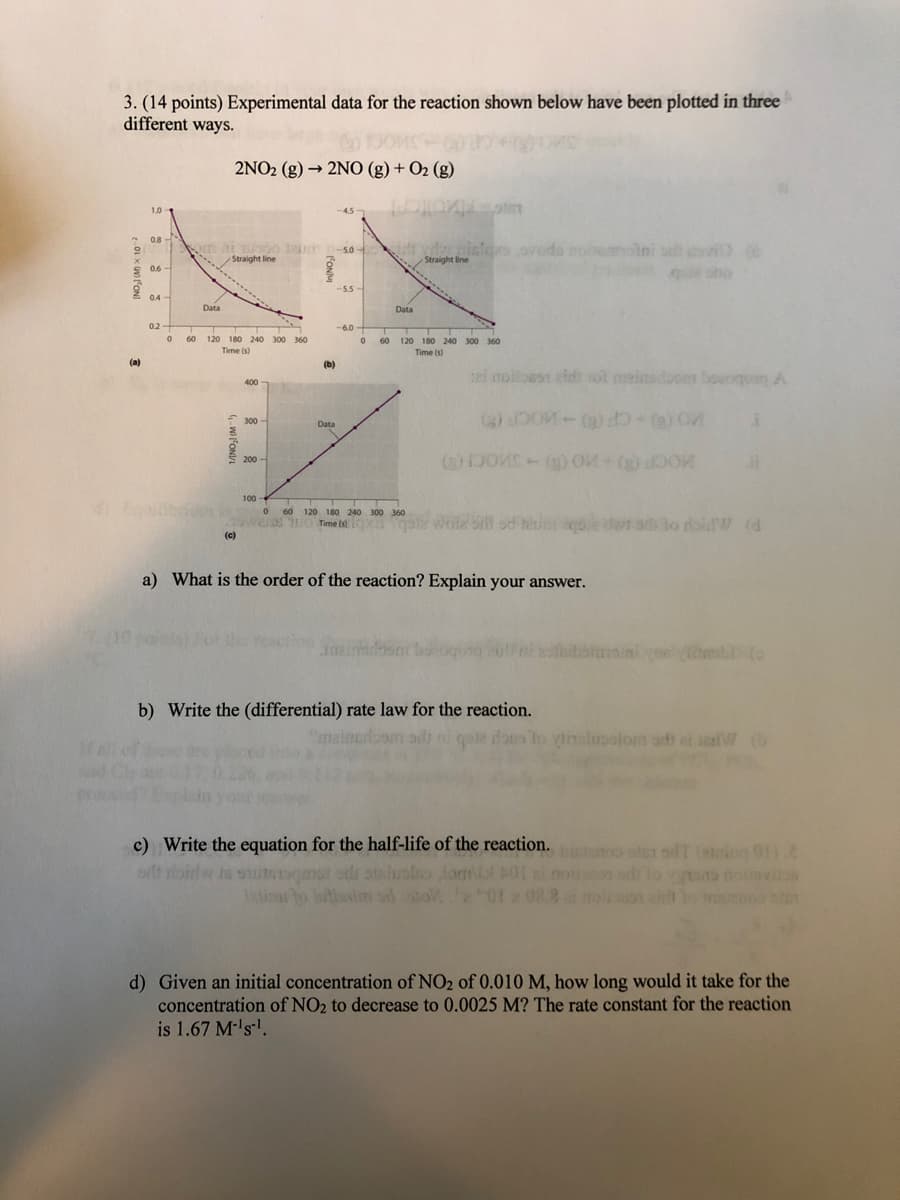3. (14 points) Experimental data for the reaction shown below have been plotted in three different ways. 2NO2 (g) → 2NO (g) + O2 (g) 1.0 08 oved 50 Straight line Straight line 0.6 qu ono -5.5 04 Data Data 0.2 -60 60 120 180 240 300 360 60 120 180 240 300 360 Time (s) Time (s) (a) (b) es1 eld sol doom louoquan A 400 300 Data 200 100 60 120 180 240 300 360 ole Sfl od hiueqealo roiW (d Time Is (c) a) What is the order of the reaction? Explain your answer. hibbmsini hesto b) Write the (differential) rate law for the reaction. mein qote dans to yioalioolorm of at ilW ( c) Write the equation for the half-life of the reaction. la sutmr otls atsluolo Jom d) Given an initial concentration of NO2 of 0.010 M, how long would it take for the concentration of NO2 to decrease to 0.0025 M? The rate constant for the reaction is 1.67 M-'s. ONM 4-Wl'ON z-01 x ON
Electronic Effects
The effect of electrons that are located in the chemical bonds within the atoms of the molecule is termed an electronic effect. The electronic effect is also explained as the effect through which the reactivity of the compound in one portion is controlled by the electron repulsion or attraction producing in another portion of the molecule.
Drawing Resonance Forms
In organic chemistry, resonance may be a mental exercise that illustrates the delocalization of electrons inside molecules within the valence bond theory of octet bonding. It entails creating several Lewis structures that, when combined, reflect the molecule's entire electronic structure. One Lewis diagram cannot explain the bonding (lone pair, double bond, octet) elaborately. A hybrid describes a combination of possible resonance structures that represents the entire delocalization of electrons within the molecule.
Using Molecular Structure To Predict Equilibrium
Equilibrium does not always imply an equal presence of reactants and products. This signifies that the reaction reaches a point when reactant and product quantities remain constant as the rate of forward and backward reaction is the same. Molecular structures of various compounds can help in predicting equilibrium.

Step by step
Solved in 2 steps with 2 images




